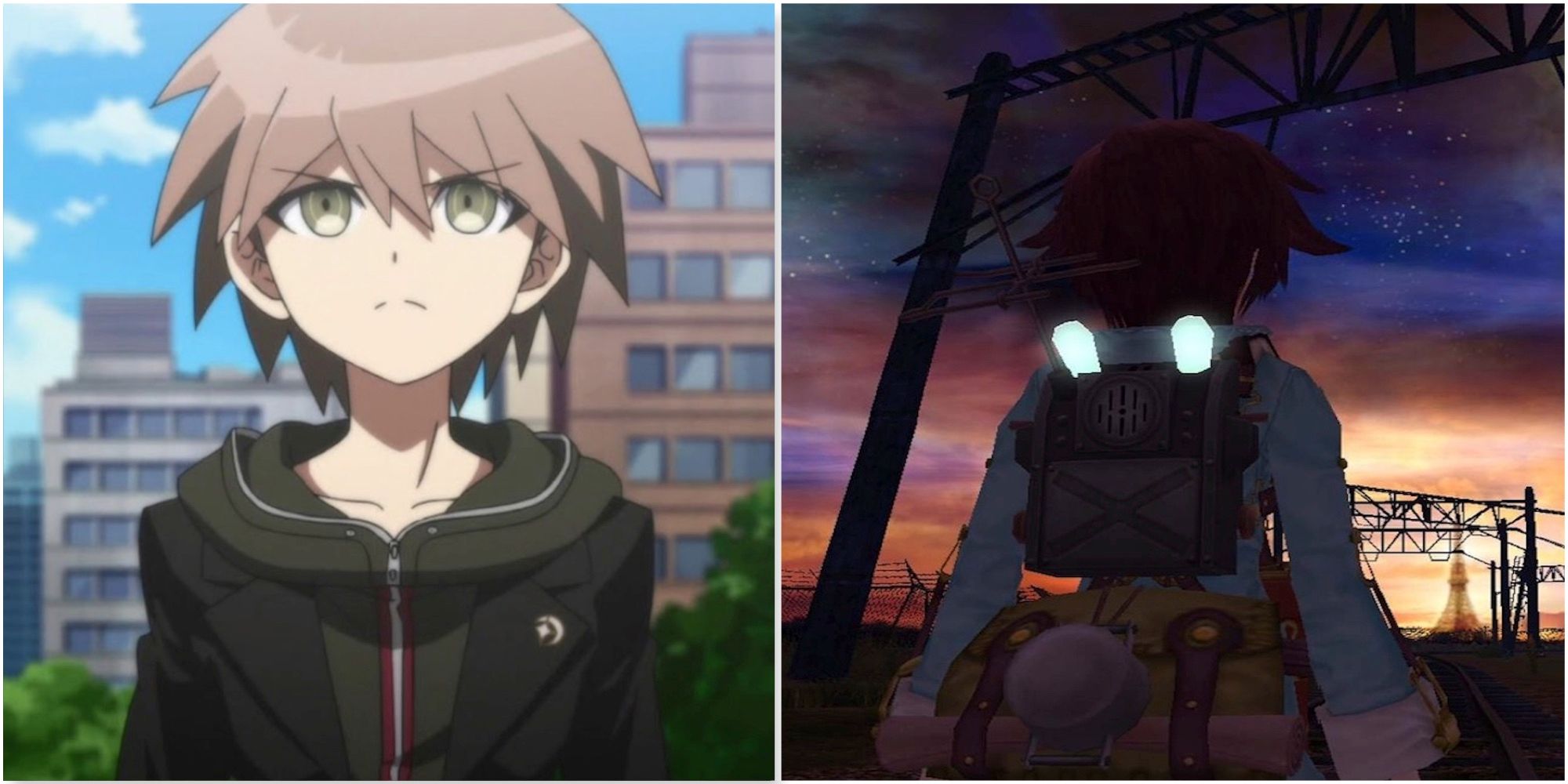Summary
- Atomfall is inspired by the real-life Windscale Disaster, a cautionary tale of nuclear mishaps and political intrigue.
- In Atomfall’s alternate timeline, the disaster at Windscale escalates, leading to extreme mutations and global consequences.
- Rebellion’s game explores a post-apocalyptic England, stressing uncovering mysteries and secrets within the uniquely British setting.
Atomfall is an upcoming game from developer Rebellion that takes placce in a post-apocalyptic Northern England. Among other things, Atomfall‘s gameplay includes exploring a world ravaged by radioactive fallout, developing relationships with competing factions, and basic resource management. But there is a bit more to Atomfall that has helped it stand out from the crowd. Part of that is the uniquely British setting, which has helped to bring attention to an obscure piece of nuclear history. The story of Atomfall is a work of fiction, but underneath the mutants, giant robots, and cryptic telephone boxes is a surprising grain of truth. Its foundation is a real event that changed the course of history, even if its impact has been overshadowed since.

Related
Atomfall is an upcoming project from Rebellion that has drawn a lot of attention, with its 1960s sci-fi setting giving way to some exciting gameplay.
At the core of Atomfall is the real-life Windscale Disaster of 1957. It was, at the time, the biggest nuclear disaster in history. The story is a cautionary tale of what happens when ambitious politicians interfere with things they don’t fully understand. Incompetence and skewed priorities led to what some people refer to as “The British Chernobyl.” While the disaster might not have been as bad as Chernobyl, it was a devastating catastrophe whose impact would be felt for decades.
6
Background: Nuclear Politics
It All Starts With the Nuclear Arms Race
During World War II, the Nazis were trying to figure out how to make an atom bomb, so the Allies had a strong incentive to get there first. To this end, Britain started a top-secret program called Tube Alloys, like a British version of the Manhattan Project. Both worked independently until the 1943 Quebec Agreement merged Tube Alloys and the Manhattan Project into a single research program. This cooperation led to the end of World War II in 1945, when atomic bombs were dropped on Hiroshima and Nagasaki. A year later, Churchill signed the McMahon Act, which promised that Britain and America would continue to collaborate on nuclear research.
Unfortunately for Churchill, the United States amended the act in 1954, effectively hoarding all of America’s future research into nuclear technology. The British government saw the USA’s actions as a betrayal of their alliance. To make matters worse, the Cold War was starting, and both sides were armed with nuclear weapons. There was suddenly huge pressure on the British government to get in on the growing popularity of nuclear power, which led to atomic research being conducted at the Windscale site. That included a short-lived effort by Britain to produce its own nukes, but it also saw the opportunity to make a huge splash in the area of nuclear power.
5
The Power Plant
It Was Never Going to Work
The nuclear power plant in Windscale wasn’t the first of its kind, but this was at an unprecedented scale. The ability to power a whole city was a radical one. If successful, it would have been a game-changer for nuclear power.
The plant boasted two reactors known as Piles 1 and 2, located in a pair of large concrete chimneys. Unfortunately, these nuclear reactors were not well-designed. Government pressure, combined with limited understanding of a new field of science, resulted in rushed construction and in-fighting among the building team. There were arguments about whether the plant should use plutonium or uranium. Another dispute involved head engineer John Cockcroft, who was adamant that both piles should have filters on top, while the workers were less confident in his idea. The filters did eventually go up, but not without workers mocking them as “Cockcroft’s Folley.”

Related
8 Best Games Set In A Nuclear Wasteland, Ranked
No one wants to personally experience a nuclear wasteland, but thankfully, these video games are available to deliver the experience in virtual form.
One of the biggest mistakes made at the Windscale plant was its cooling system. Without getting too complex, a key component to making sure it functions effectively is making sure it doesn’t overheat. Temperature regulation is crucial, which is why a lot of nuclear plants use water to prevent it. Windscale, however, tried something different. They had a system where air was pumped from outside into the reactor chambers and blown onto the reactor with large turbines. In theory, the cool air would counteract any spike in temperature from the reactor. In practice, it ended up doing the opposite.
4
The Disaster
When Everything Went Wrong
The big moment came on October 10, 1957, when the reactor in Pile 1 overheated. The response was to try to cool it using the air filtration system, but there was no stopping this. It turned out that the reactor had actually caught on fire, and instead of cooling it down, the air filtration system was pumping in oxygen that was actually fanning the flames.
This was a situation nobody was prepared for. Not only was it burning at 400 degrees Celsius (750 degrees Fahrenheit), it was also shooting radioactive material into the atmosphere and contaminating the surrounding environment. This being so early in the history of nuclear research, any solution was guesswork at best. Radiation was spreading across Europe, and the fire was showing no signs of stopping.
Enter Tom Tuoy, the plant’s manager, who put on a radiation suit and climbed a ladder to the top of Pile 1 so he could look inside. Even with the protective suit, Tuoy was exposing himself to a dangerous amount of radiation and literally looking into a bright burning reactor. It was a bold move, but it paid off, because his report offered a possible solution.
The only problem was the solution wasn’t guaranteed to work, and in fact had a chance of backfiring horrendously. The only viable plan for stopping the radioactive inferno in Pile 1 was to cut off its oxygen supply and use fire hoses to snuff out the flames. There was also a chance this method could also cause an explosion, but it was the only thing available. Tuoy actually climbed Pile 1 again to get the hoses inside, and they hit it with everything they had. The fire lasted three days before it was finally put out.
3
The Government’s Response
Politics Over Safety
Anyone familiar with the Chernobyl Disaster will know how it was exacerbated by the Soviet Government, who tried to downplay the problem. The British government did the same for Windscale. The plant was built for political reasons and the government had pushed for it to be completed as quickly as possible, to the point where safety was being sacrificed.
After the disaster, the government worried about the impact on Britain-U.S. relations, so they acted like everything was normal. Personnel were still expected to show up for work. Civilians near the plant were not evacuated. And even after it was over, the government was so determined to keep it under wraps they went as far as to publicly downplay Tuoy’s impressive role in keeping it from getting worse. All those efforts were ultimately unsuccessful, and the public wasn’t happy when the truth came out.
This fits with a few details of Atomfall‘s world, particularly how the exclusion zone is enforced by the military unit PROTOCOL and civilians seem to be held inside against their will. Much like in real life, the government prioritizes political relations over the safety of its people. And if the actual disaster was deemed enough of a threat to that to warrant a cover-up, imagine how the same politicians would react to Atomfall‘s version of events. And then there’s the implication that the army is doing some things in the zone that the government doesn’t want to get out.
2
Aftermath
The Legacy Of The Disaster
At the time, Windscale was the biggest nuclear disaster in history, and would hold that title until it was eclipsed by the Chernobyl Disaster 29 years later. The civilian cancer deaths attributed to radiation exposure at Windscale numbered in the thousands. It also became a major talking point in the discussion of nuclear power.
A few years earlier, nuclear energy was being embraced as the future. After Windscale, public support began to wane. While nuclear power can be safely produced when handled responsibly, it is understandable why people would be worried about another disaster. Unfortunately, the main reason it’s faded into obscurity is because of other, much bigger incidents that have overshadowed it. And yet, both Chernobyl and Fukushima happened because of a failure to learn from Windscale. They made the exact same mistakes, from rushed construction to lacking sufficient coolant for the reactor.

Related
5 Nuclear Apocalyptic Adventures to Try if You Enjoyed Chernobylite
For gamers who loved the thrill of venturing through a desolate nuclear wasteland, here are a few other games with a similar theme and feel.
The silver lining is the disaster was not as bad as it could have been. The radioactive material that escaped was a tiny fragment of what the Piles actually contained. And that was thanks to “Cockcroft’s Folly,” the filters that had gotten mocked. Had they not been installed, it’s likely that Windscale would have turned into something closer to Chernobyl. Another uplifting detail is that Tom Tuoy actually emerged from the disaster in one piece, somehow managing to not die of radiation poisoning.
1
The Alternate Ending: Atomfall’s Setup
Where Things Change
In real life, Windscale was a great example of how not to run a nuclear plant. But the disaster was somewhat mitigated because, in a few instances, cooler heads prevailed and stopped it from getting worse. Atomfall takes place in an alternate timeline where things turned out differently, similar to how S.T.A.L.K.E.R. uses Chernobyl.
It’s not entirely clear exactly where history diverges in the game. Perhaps Cockcroft’s filters never got installed, Tuoy failed to reach Pile 1, or the fire hoses ended up causing an explosion. Whatever specific variations happened, one thing is clear: in this timeline, things went much worse. The game’s artwork appears to be alluding to this, showing the Windscale Plant with some kind of blue stream coming out of its center (presumably meant to represent its radioactivity).
Rebellion has said several times that a big part of the game is uncovering the mysteries and secrets of the world. Getting to the plant seems to be an important part of the game, so it’s likely that players will start to find answers as they progress regarding the specifics. However, we can discern a few things from the trailers. It appears in this timeline, the surrounding countryside is heavily irradiated. The treatment of Windscale as an “exclusion zone” guarded by the military also seems reminiscient of what would later happen at Chernobyl, implying a bigger disaster. While it may or may not be addressed in-game, it is worth noting that this version of events could have some serious ramifications beyond Britain. The actual Windscale disaster managed to spread radiation across Europe before it was contained. Atomfall‘s timeline could have done much worse.
Atomfall releases March 27, 2025.

More
8 Best Post-Apocalypse Games Set In Japan
These games place their post-apocalyptic game settings in Japan and do so with great success.











Leave a Reply